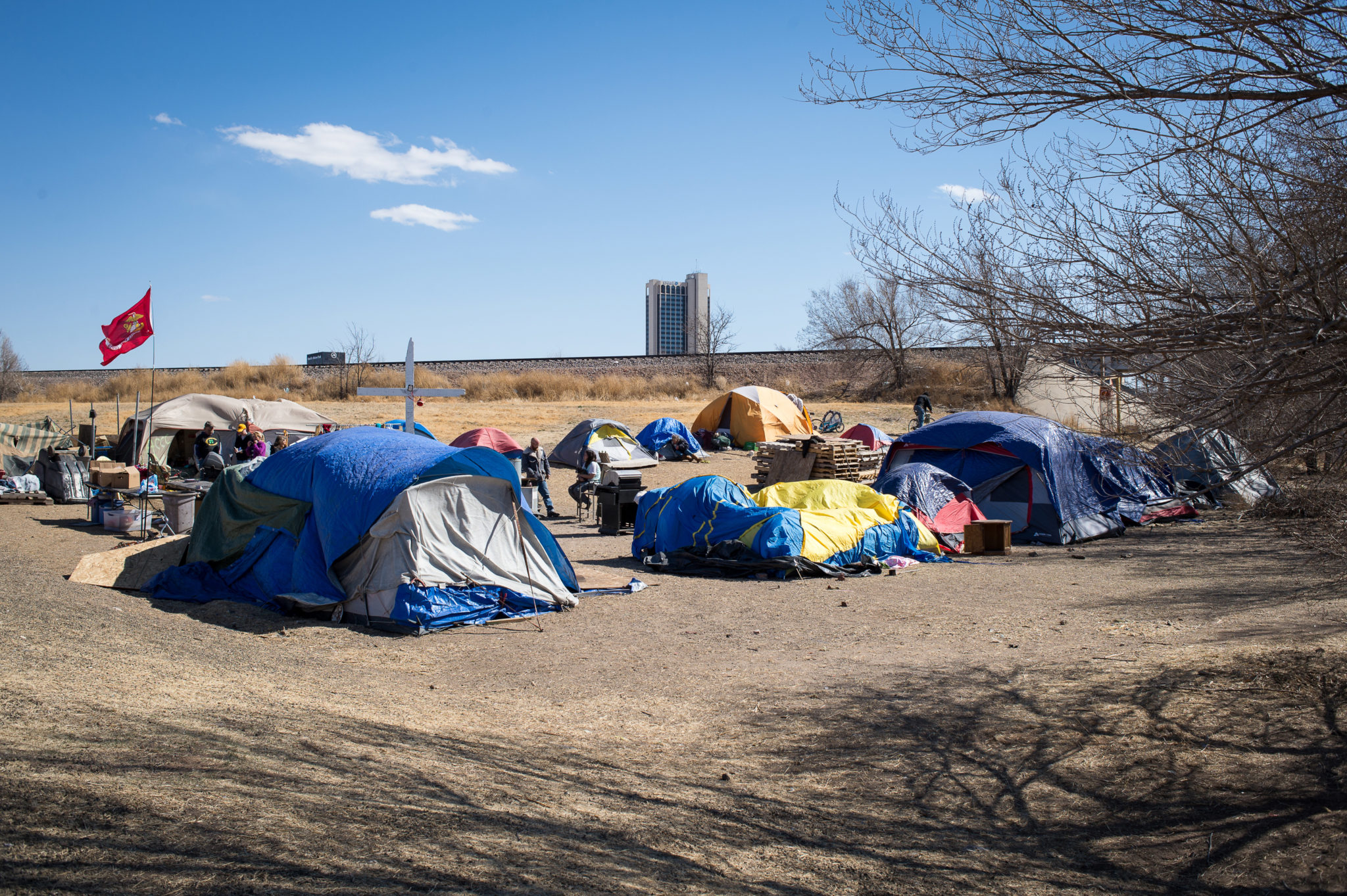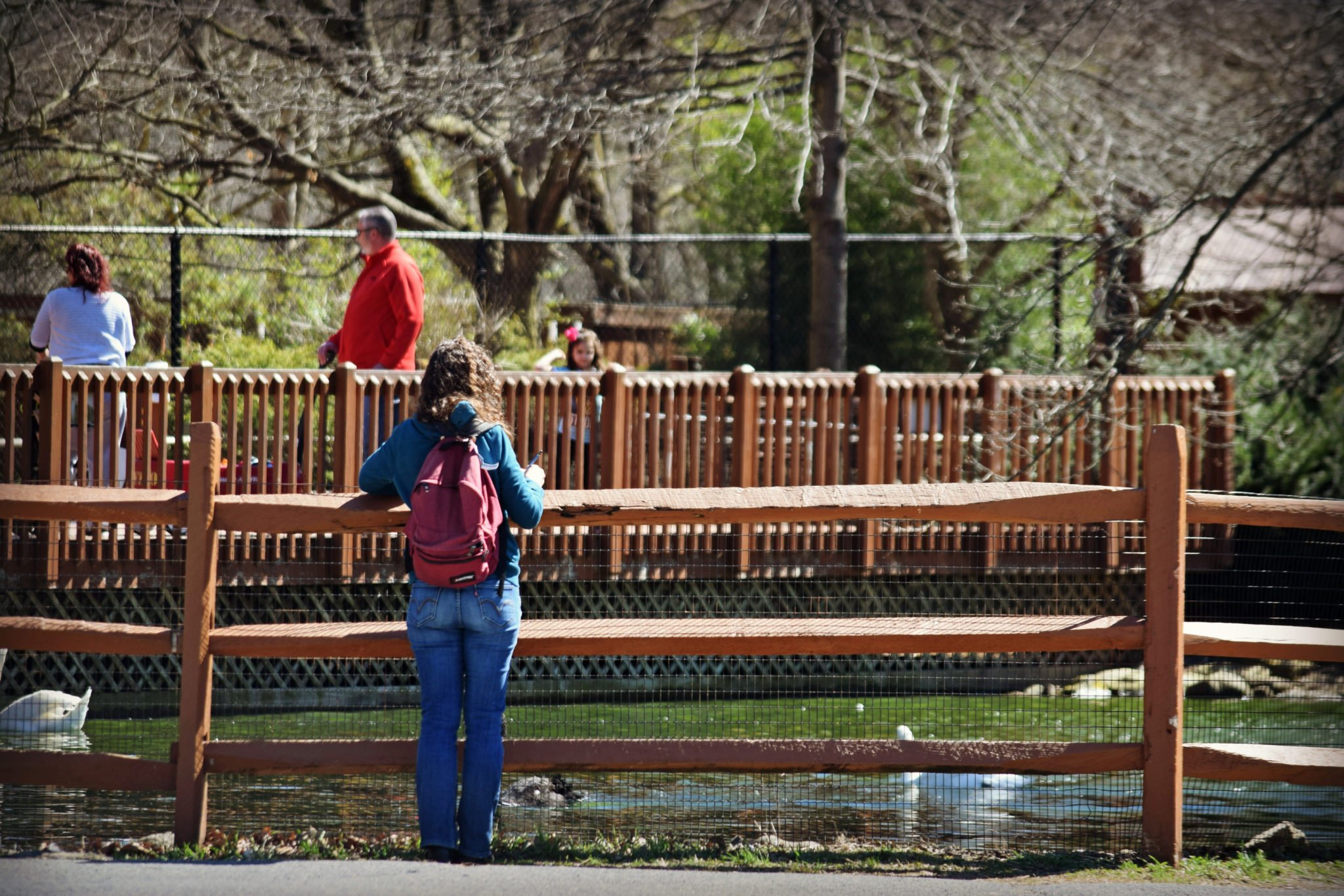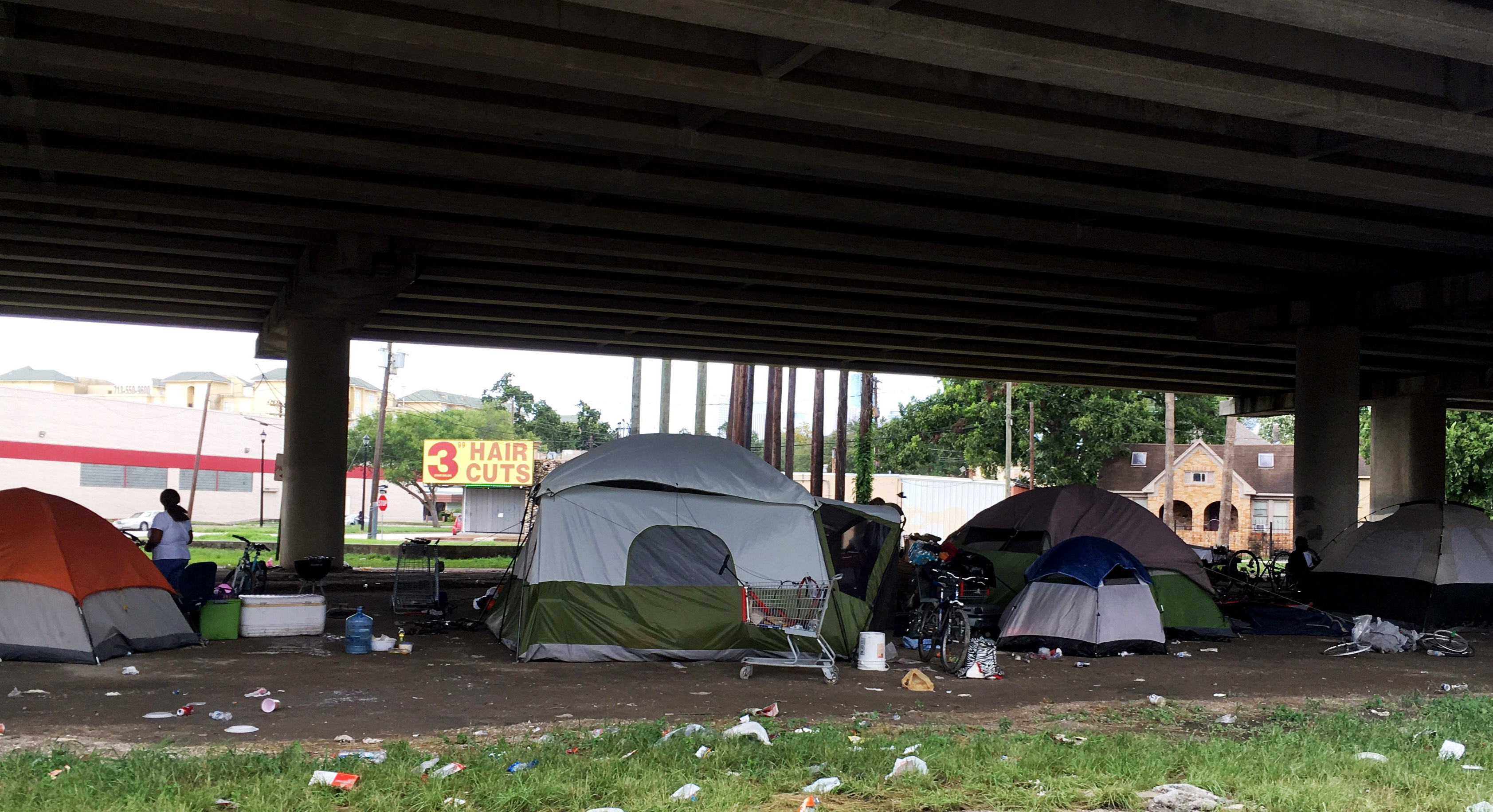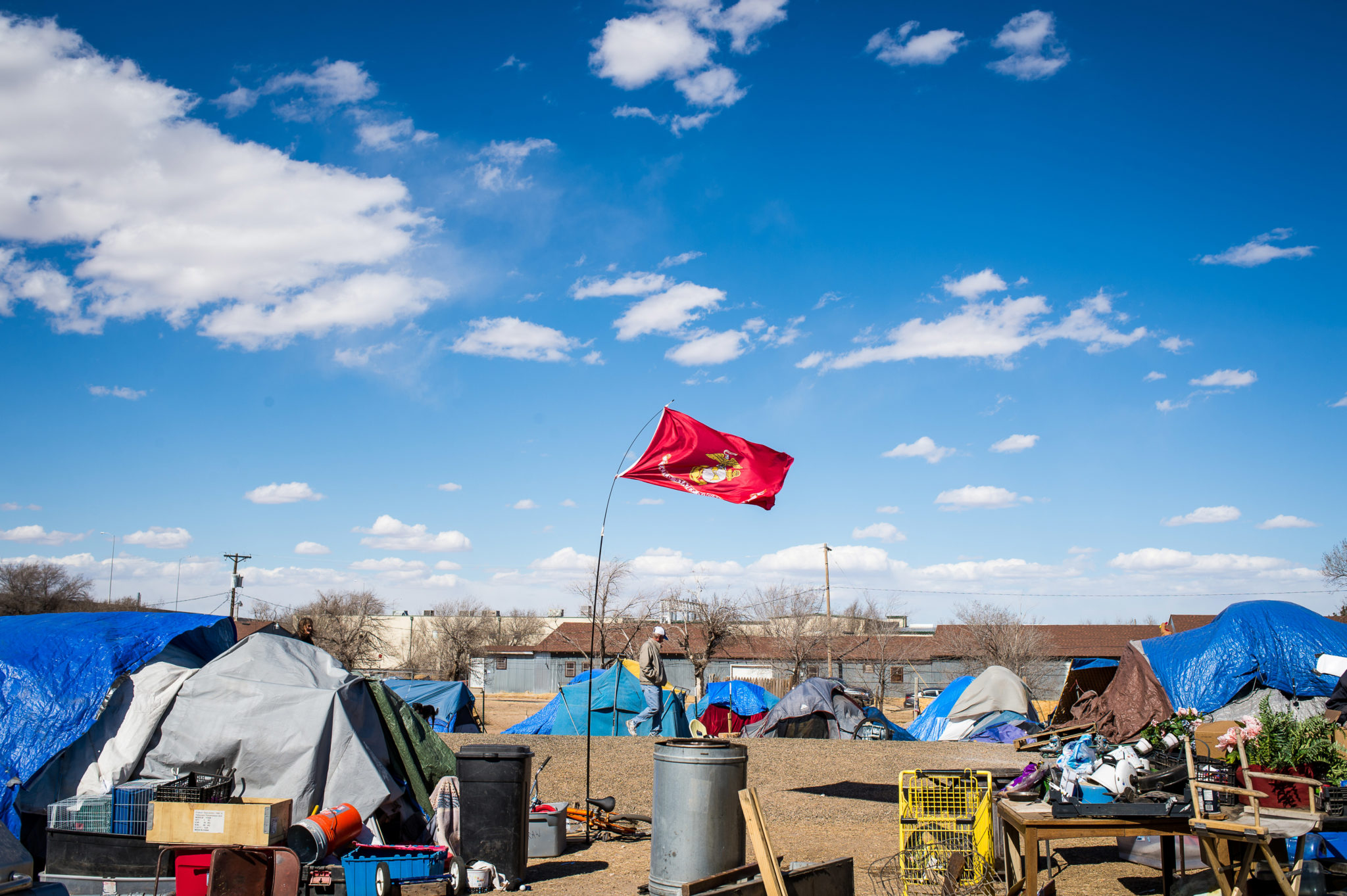
Public Camping Bans Won’t Solve Homelessness. But Could They Get Us Talking About Real Solutions?
In Victoria, an anti-camping ordinance stands to harm the homeless. But it could also lead to important conversations about a statewide problem.

Above: Christ Church Camp, a former tent city for displaced individuals in Amarillo.
On July 16, Andrew Young, a member of the Victoria City Council, said he had a problem: A few homeless people had set up tents on public property and along city rights-of-way in the town of 63,000 near the Gulf Coast. During the council meeting that day, a resident chimed in, adding that a homeless woman had set up a tent in her neighborhood; the woman was “hijack[ing] a once-beautiful, serene spot in our community,” the resident said, urging city leaders to do something—and soon.
Young could have taken the opportunity to grill city staff about the dearth of services offered to the 108 homeless people who live here, or he might have asked why so little affordable housing exists in Victoria. But that’s not what Young did. Instead, he led the council in proposing an ordinance prohibiting camping in the city’s residential areas and historic districts. The proposal was tentatively approved at a council meeting three weeks later. The Victoria Advocate quoted Young as saying the measure would “provide a tool for police to do something.”
This is often how the conversation about homelessness plays out in Texas, as public officials and NIMBYers outline the city blocks that the homeless ought to avoid, or else. That’s the type of talk that overtook Amarillo, another mid-sized Texas city, in 2018, when a few dozen homeless people set up tents on private property near downtown. Amarillo residents complained that the encampment was an unsanitary eyesore. The city tried to stamp it out, taking the property owner to court and arresting a homeless activist.
Even Governor Greg Abbott has entered the fray to discuss the merits, or lack thereof, of public camping ordinances. After the City of Austin relaxed camping rules for its homeless population, rescinding local ordinances that prohibited homeless people from sitting or sleeping in many public areas, Abbott seized on his favorite political target. In response to a car accident in Austin allegedly caused by homeless people in the road, Abbott chalked the incident up to the city’s freewheeling approach on homelessness, tweeting, “Look at this insanity caused by Austin’s reckless homeless policy. … The horror stories are piling up.”
“People experiencing homelessness right before our eyes is just an indicator that what we’re doing is not working.”
But homeless advocates, both nationally and in Texas, say conversations limited to encampments miss the mark. When officials squabble over public camping, they sometimes neglect to ask more substantive questions: How do we increase our stock of affordable housing, lift people out of poverty, and better treat mental illness?
“Arguing about encampments without talking about the root causes is a fruitless conversation,” said Eric Samuels, president and CEO of the Texas Homeless Network. “It’s much easier to blame people for the situation they’re in than to look at the overall structural situation and identify that as a contributor to homelessness.” Samuels noted that only a small portion of the state’s homeless population live in tents. Many others shuffle between short-term shelters, sleep in cars, or couch-surf. An alarming number of homeless Texans, especially in urban and rural areas, are schoolchildren. After years of progress, the state’s homeless population is climbing again, up to 25,300 on any given day in 2018. That’s compared to 23,100 in 2016.
Without expansion of affordable housing in the state, those numbers are likely to keep rising, said Steve Berg, vice president for programs and policy at the National Alliance to End Homelessness. “The only way to deal with homelessness in a way that makes the community better is to get housing for people. If you don’t have housing as part of [the plan], it’s kind of bound to fail,” he said. A recent Zillow study found that in communities where households’ rent payments exceed 30 percent of their income, “the risk of housing insecurity and/or homelessness rapidly increases.” State data shows that fair-market rent for a one-bedroom apartment in Victoria County is $784; a person working full time at a minimum-wage job in the county could only afford to pay about half of that, or $377.
Christina Rosales, communications director of Texas Housers, said anti-public camping ordinances tend to criminalize homelessness, making it harder for people to eventually find housing, as landlords can still decline to rent to someone with a criminal record. Instead of reflexively punishing the homeless for camping, Rosales said, the public should try to see these situations as “the tip of the iceberg.”
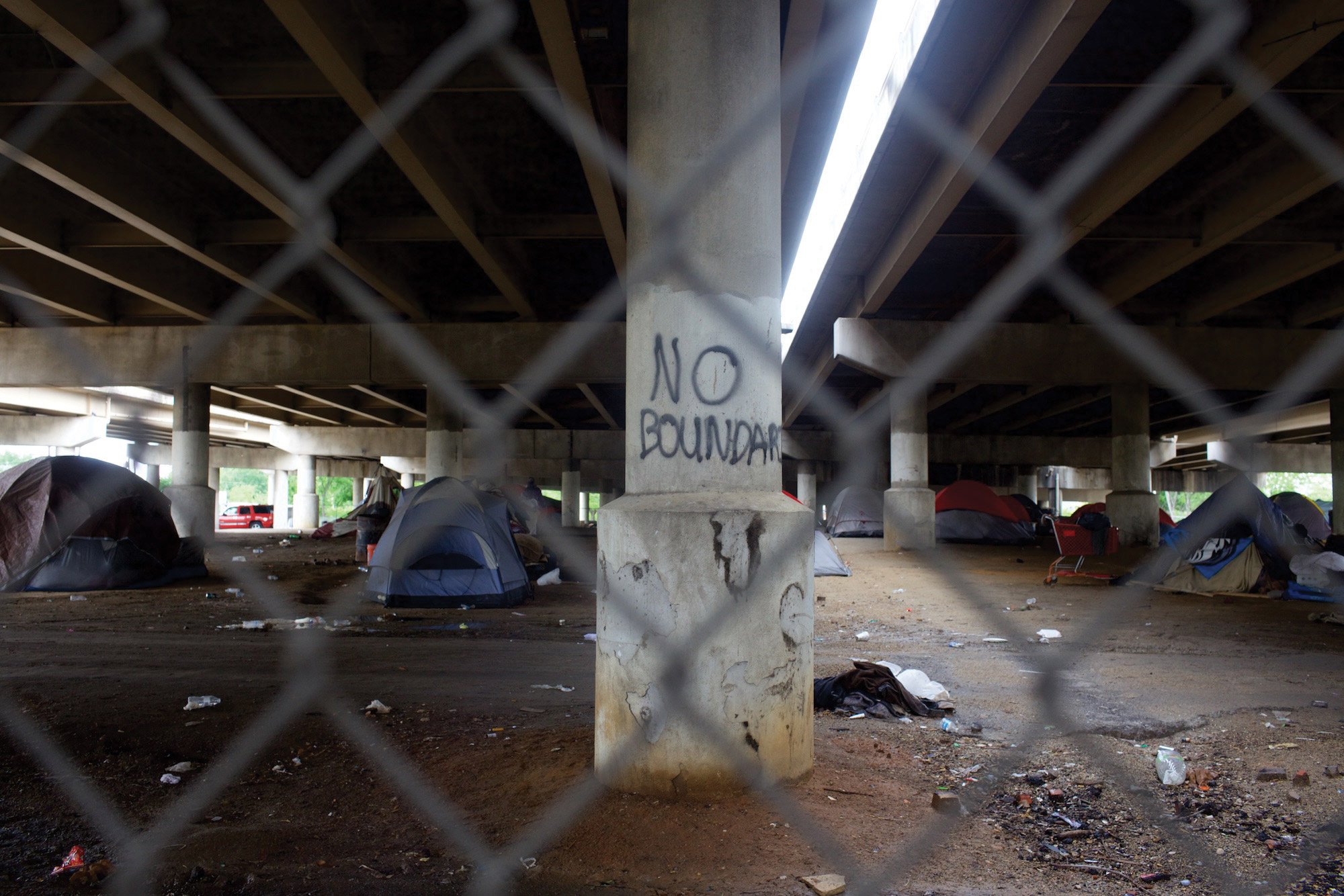
“People experiencing homelessness right before our eyes is just an indicator that what we’re doing is not working,” she said.
In Victoria, the proposed camping ordinance is not yet law. City Manager Jesús Garza said it will need to pass three readings, the second of which will take place at a regular council meeting on September 17. In the meantime, the proposal has sparked a debate among residents—and not just about whether the homeless should be allowed to camp in a public place. At the August council meeting when the proposal passed a first reading, a handful of advocates cautioned against the action, instead urging the city to explore affordable housing and services for the homeless.
An official at the local Salvation Army—a homeless shelter that was waylaid by Hurricane Harvey and just reopened in July—characterized the proposal as “inhumane” and “not necessary,” the Advocate reported. Even the police chief expressed skepticism, saying, “it is by no means the panacea for solving camping issues.” Lisa Griffin, president of the Victoria Area Homeless Coalition, told the Observer that the proposal boils down to visibility. “My take is that it really is to remove people who are homeless from those areas where people don’t want to look at them.”
Still, she said, the interest in homelessness may actually lead to long-term change. There’s some precedent for that: In Amarillo, after waging a failed campaign to empty a homeless encampment, the city capitulated. It hired a full-time employee to run a new initiative in line with the “housing first” playbook, which focuses on first providing people with safe, permanent housing. Now some of the camp’s residents are being connected with a caseworker and a fully furnished apartment.
Could something similar happen in Victoria? For Griffin, just having the conversation is a great first step. “Anything that will shine some light on the situation is a good thing. It’s not always pleasant, but it gets us to what we need to talk about,” she said.
Read more from the Observer:
-
Warning Signs: Rural East Texas has some of the highest suicide rates in the state. But the safety net for people who need help is being stretched thin, and some Texans are falling through.
-
After the Midland-Odessa Shooting, Texas Republicans Double Down on God and Guns Doctrine: After the second Texas mass shooting in a month, Democrats call for action while Republicans promise to protect the “God given rights” of gun ownership.
-
Greg Abbott’s Non-Denial Denial on Anti-Immigrant Rhetoric:The governor spoke of a “course correction,” but it’s going to take a mighty swerve to steer away from the Texas GOP’s weaponization of viciously anti-immigrant rhetoric.
